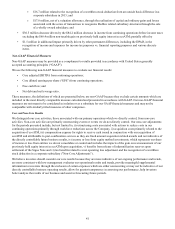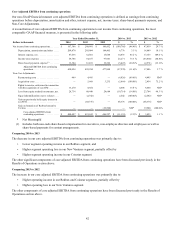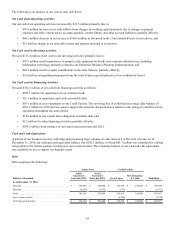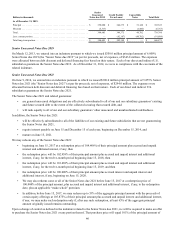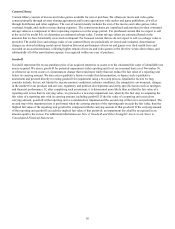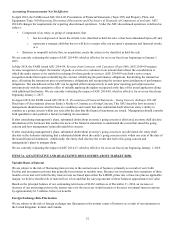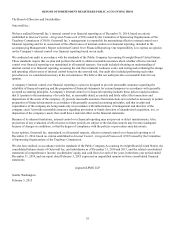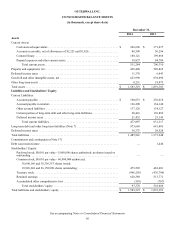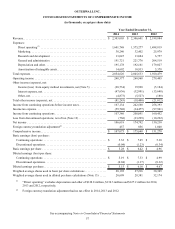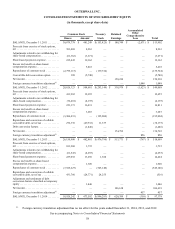Redbox 2014 Annual Report Download - page 58
Download and view the complete annual report
Please find page 58 of the 2014 Redbox annual report below. You can navigate through the pages in the report by either clicking on the pages listed below, or by using the keyword search tool below to find specific information within the annual report.50
Content Library
Content library consists of movies and video games available for rent or purchase. We obtain our movie and video game
content primarily through revenue sharing agreements and license agreements with studios and game publishers, as well as
through distributors and other suppliers. The cost of content mainly includes the cost of the movies and video games, labor,
overhead, freight, and studio revenue sharing expenses. The content purchases are capitalized and amortized to their estimated
salvage value as a component of direct operating expenses over the usage period. For purchased content that we expect to sell
at the end of its useful life, we determine an estimated salvage value. Content salvage values are estimated based on the
amounts that we have historically recovered on disposal. For licensed content that we do not expect to sell, no salvage value is
provided. The useful lives and salvage value of our content library are periodically reviewed and evaluated. Amortization
charges are derived utilizing rental curves based on historical performance of movies and games over their useful lives and
recorded on an accelerated basis, reflecting higher rentals of movies and video games in the first few weeks after release, and
substantially all of the amortization expense is recognized within one year of purchase.
Goodwill
Goodwill represents the excess purchase price of an acquired enterprise or assets over the estimated fair value of identifiable net
assets acquired. We assess goodwill for potential impairment at the reporting unit level on an annual basis as of November 30,
or whenever an event occurs or circumstances change that would more likely than not reduce the fair value of a reporting unit
below its carrying amount. We may assess qualitative factors to make this determination, or bypass such a qualitative
assessment and proceed directly to testing goodwill for impairment using a two-step process. Qualitative factors we may
consider include, but are not limited to, macroeconomic conditions, industry conditions, the competitive environment, changes
in the market for our products and services, regulatory and political developments and entity specific factors such as strategies
and financial performance. If, after completing such assessment, it is determined more likely than not that the fair value of a
reporting unit is less than its carrying value, we proceed to a two-step impairment test, whereby the first step is comparing the
fair value of a reporting unit with its carrying amount, including goodwill. If the fair value of a reporting unit exceeds its
carrying amount, goodwill of the reporting unit is considered not impaired and the second step of the test is not performed. The
second step of the impairment test is performed when the carrying amount of the reporting unit exceeds the fair value, then the
implied fair value of the reporting unit goodwill is compared with the carrying amount of that goodwill. If the carrying amount
of the reporting unit goodwill exceeds the implied fair value of that goodwill, an impairment loss shall be recognized in an
amount equal to the excess. For additional information see Note 4: Goodwill and Other Intangible Assets in our Notes to
Consolidated Financial Statements.



